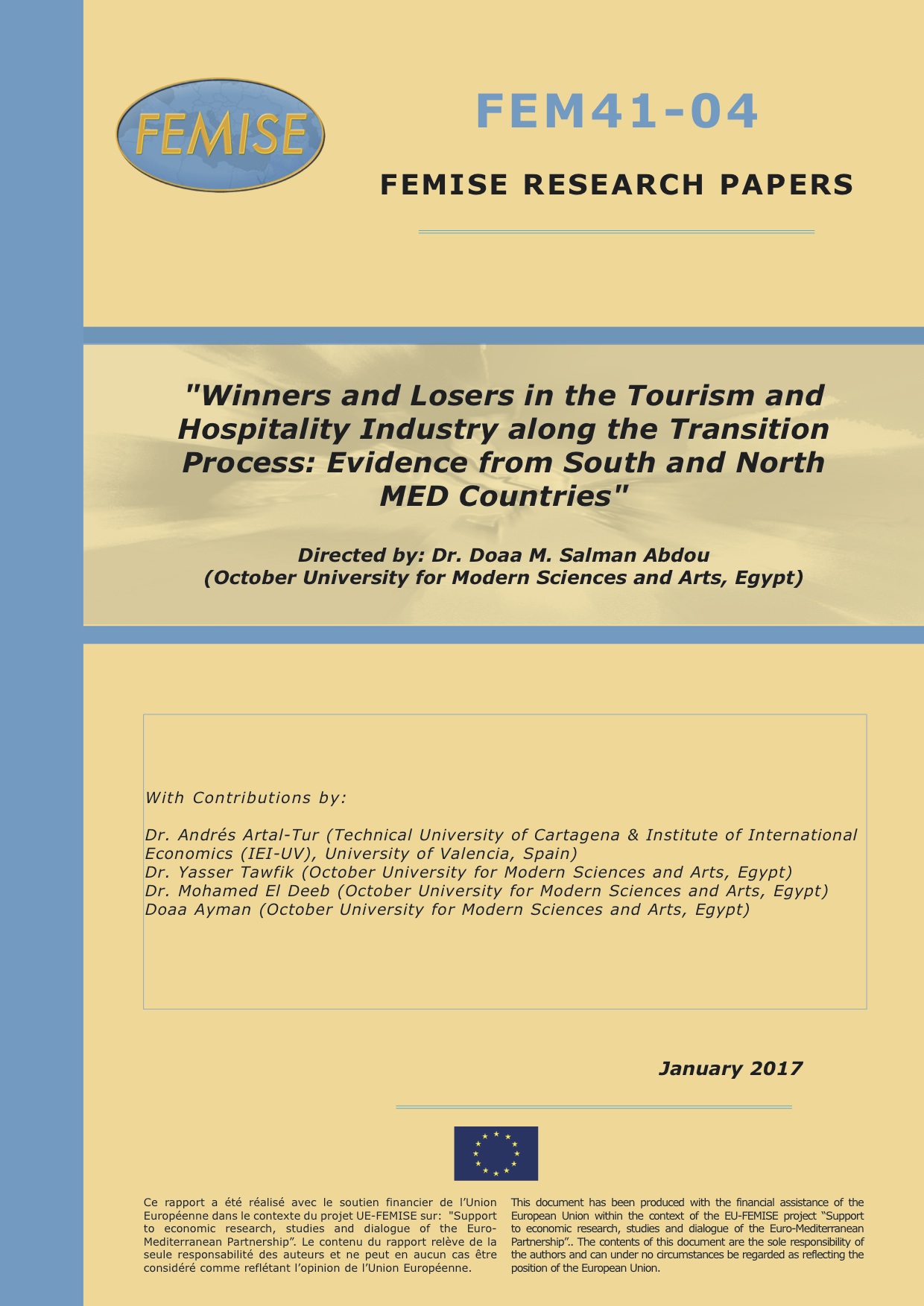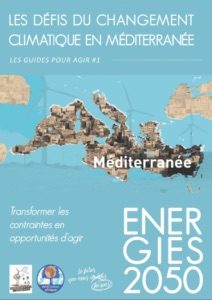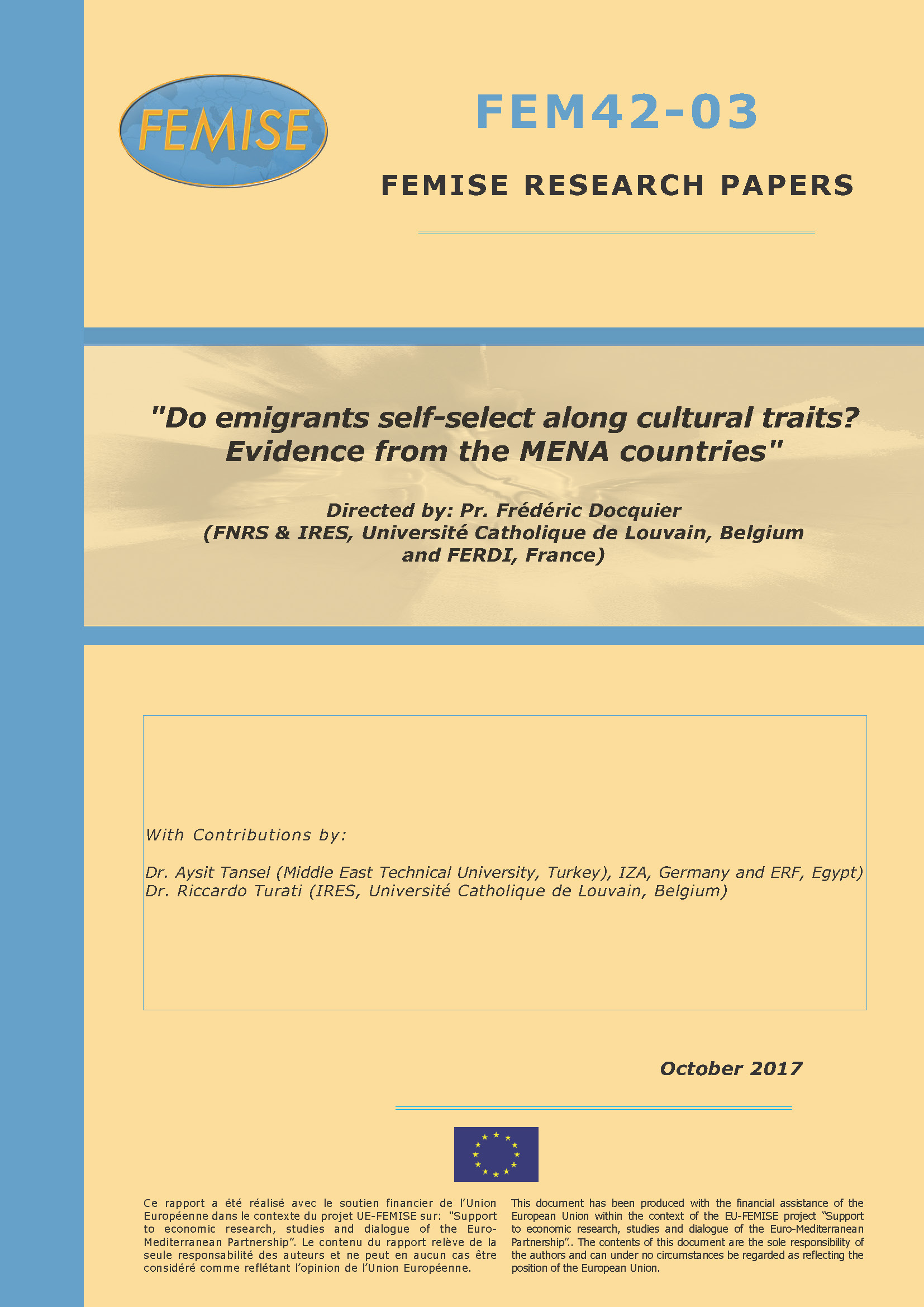 Migrants’ selection by cultural traits, beliefs and practices has been largely understudied in the existing literature. In an attempt to fill this gap, this paper investigates whether migration aspirations, concrete plans to emigrate, and preferred destination choices are influenced by cultural traits in the Middle East and Northern Africa (MENA). We use the Gallup World Poll (GWP) surveys, which document migration aspirations, cultural traits and many other characteristics of individuals. We limit our sample to 17 MENA countries where Gallup conducted at least one wave of its survey between the years 2007 and 2016.
Migrants’ selection by cultural traits, beliefs and practices has been largely understudied in the existing literature. In an attempt to fill this gap, this paper investigates whether migration aspirations, concrete plans to emigrate, and preferred destination choices are influenced by cultural traits in the Middle East and Northern Africa (MENA). We use the Gallup World Poll (GWP) surveys, which document migration aspirations, cultural traits and many other characteristics of individuals. We limit our sample to 17 MENA countries where Gallup conducted at least one wave of its survey between the years 2007 and 2016.
To begin with, we show that migration aspirations are correlated with actual migration flows obtained from the OECD International Migration Database. This suggests that the patterns of migration aspirations are likely to be similar to the patterns of actual migration. The average share of aspiring migrants in our sample is around 24%. Syria exhibits the largest share with over 35%; Jordan and Algeria come next at about 30%; Niger, Azerbaijan and Chad exhibit the smallest shares at about 20%. Through cultural proximity and network effects, former colonial ties are still affecting the preferred destinations of aspiring migrants. On average, 52.3% of the aspiring migrants from the MENA would like to move to an OECD destination country. This share amounts to 90% in Morocco and Algeria, while it is around 10% in Yemen and Niger.
We conduct a two-stage Principal Component Analysis on a set of 12 opinion questions to identify four synthetic indicators of cultural traits. We find that Lebanon and Azerbaijan are the most progressive in terms of gender-egalitarian attitudes. Iran and Azerbaijan are the less religious countries; on the contrary, sub-Saharan African countries (i.e., Chad, Mauritania, Mali and Niger) exhibit the highest levels of religiosity. Iran, Afghanistan and Syria exhibit the highest levels of generosity. Four countries that experienced turmoil and riots during the Arab Spring (i.e., Algeria, Egypt, Tunisia and Yemen) hardly justify the use of violence. We refer to these countries and Syria as the Main Insurgents. In these countries, a large share of the population finds it unjustifiable to use any kind of violence against civilians.
In our empirical analysis, we only consider two cultural traits that are highly correlated with economic development indicators, namely gender-egalitarian attitudes and religiosity. We conduct a set of fixed-effect logit regressions for several subsamples to identify the effect of cultural traits on migration aspirations. The full sample estimates show that aspirations to all destinations are negatively affected by the level of religiosity but are not influenced by gender-egalitarian views. When we distinguish between emigration aspirations to OECD and non-OECD member states, the results reveal that cultural traits are not significant for migration aspirations to non-OECD countries. In contrast, aspirations to migrate to an OECD destination decrease with religiosity, and increase with gender-egalitarian views. In other words, aspiring migrants to OECD destinations exhibit lower levels of religiosity than those who do not intend to migrate. Next, we check whether similar selection patterns apply to individuals who have concrete migration plans for the next 12 months. We find that the effect of religiosity is highly significant and even larger than for migration aspirations; the effect of gender-egalitarian views is insignificant.
We then conduct a large set of robustness checks. First, we split the set of OECD destinations into three subsets that are frequently reported as preferred destinations in the data, namely the European Union, North America and Turkey. The results confirm that the effect of gender-egalitarian views remains insignificant or marginally significant for all sets of destinations, while the effect of religiosity is highly significant when considering OECD, high-income destinations, but not when considering Turkey. Second, we split the sample along education levels, and show that our results are valid for all skill groups. Third, we distinguish between three age categories, gender groups and marital status. Selection by religiosity is significant for all age groups and is greater for men, while positive selection on gender-egalitarian views becomes significant for single women and for all individuals aged 15 to 30. This is the age group in which aspiring migrants are the most likely to realize their migration aspirations. Fourth, we checked whether the intensity of cultural selection varies with aggregate country characteristics such as the shares of Sunnis and Shiites among the Muslim population, the log-GDP per capita, two indicators of institutional quality, and the size of the migrant network in the OECD countries. Our regressions reveal that aspiring migrants from countries with a Sunni minority have more progressive gender-egalitarian views, which also become significant when controlling for migration networks. Seventh, we explored whether the link between cultural traits and migration has been affected by the Arab Spring. We consider the full sample of MENA countries, the Main Insurgents and the other countries. In all specifications, selection by religiosity is always positive and significant. Although the Arab Spring has not affected the intensity of cultural selection in the less affected countries, it has drastically reduced it in the Main Insurgent countries.
Methodologically speaking, we also explore whether our results are driven by differences in the composition of the samples of aspiring migrants and non-migrants. We use the Mahalanobis Metric Matching technique to construct samples of aspiring migrants and non-migrants that are balanced in terms of observable covariates. All conclusions of the benchmark regressions hold when using the matched samples.
We thus conclude that migrants from MENA to OECD exhibit lower levels of religiosity. Moreover, young male or female migrants share significantly more gender-egalitarian views than the rest of the population. Overall, the Arab Spring has increased the relative religiosity of aspiring migrants in the most affected countries. Consequently, emigration to OECD countries has direct implications on the distribution of cultural traits in the population left behind and on the cultural distance at destination. Nevertheless, the effects of cultural selection should not be overestimated. First, emigration hardly affects the distribution of cultural traits in the MENA countries. Emigration towards OECD countries could even reverse the selection effect if migrants abroad transfer more progressive norms and beliefs to their home country. Second, it has a limited (albeit non negligible) effect on the cultural distance between natives and immigrants in the OECD countries.


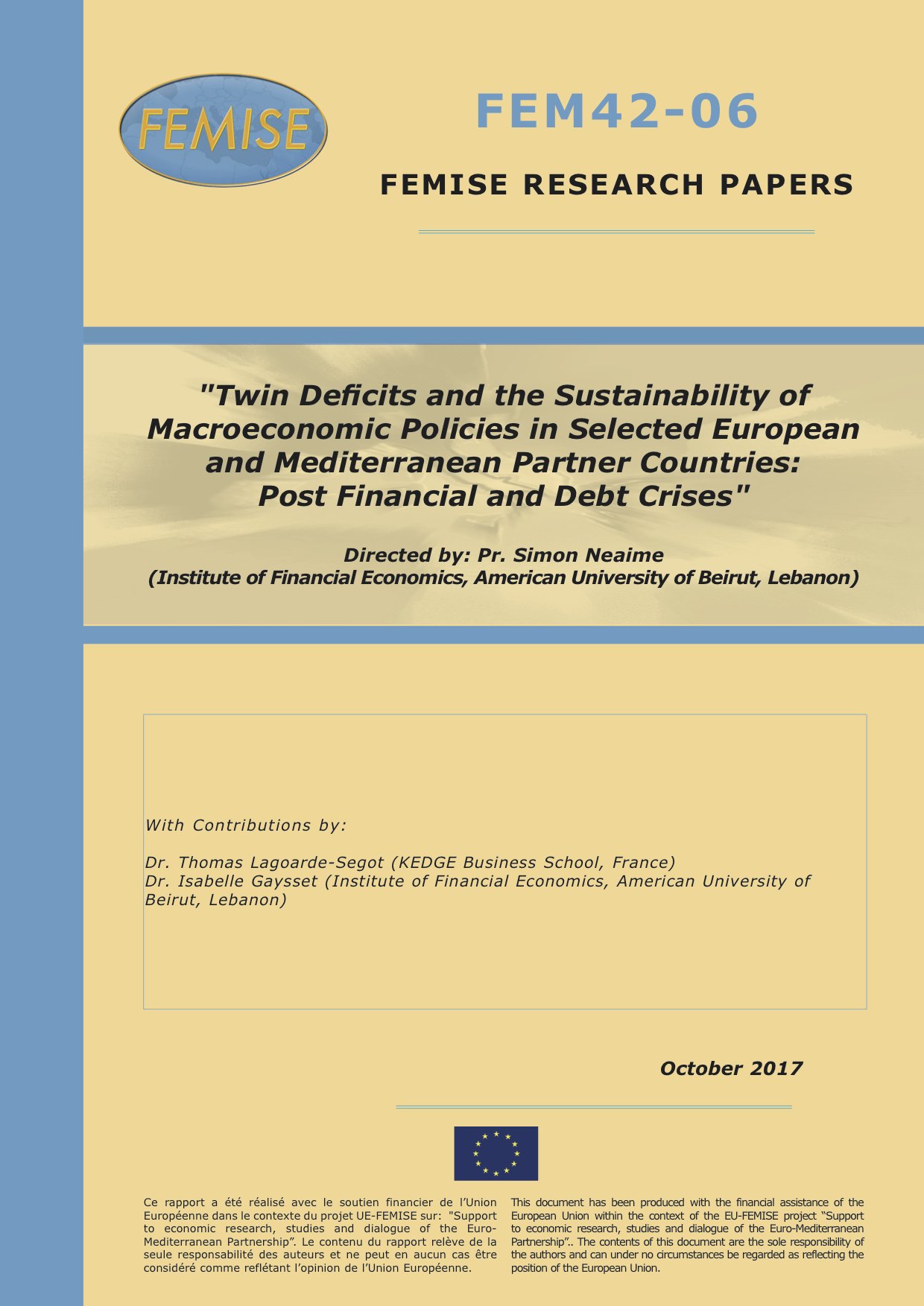
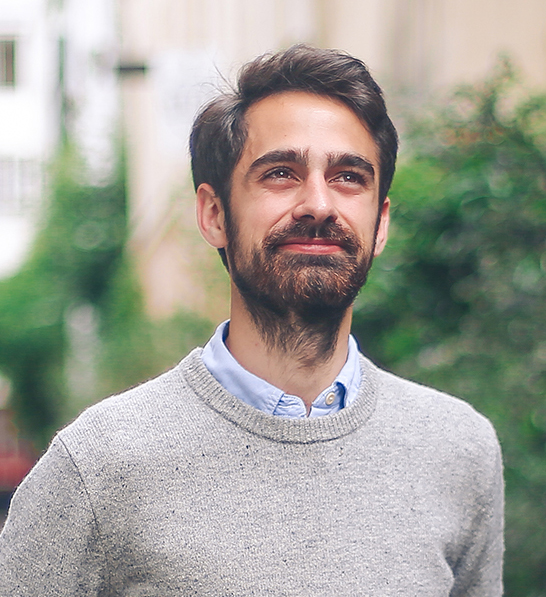 Thomas Vailleux
Thomas Vailleux 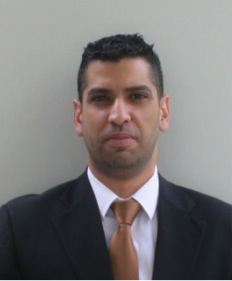 Shadi Atshan is a Palestinian entrepreneur and cofounder of Leaders Organization and FastForward Accelerator. Shadi led a group of talented professionals in establishing what has become Palestine’s largest entrepreneurship promotion organization (Leaders Organization or Qeiadat). He developed the organization’s portfolio of activities from zero to a portfolio of over $10 million USD in less than 8 years. Currently Leaders Organization is operating in Palestine, Jordan and Belgium. His work has contributed to the creation of over 45 technology startups. Today, Leaders Organization hosts Palestine’s only Technology Park “eZone”, Palestine’s first Startups Accelerator “FastForward”, Palestine’s first Social Enterprises Accelerator “SEA”, and the Palestinian House in Silicon Valley “PHSV” in San Francisco – USA.
Shadi Atshan is a Palestinian entrepreneur and cofounder of Leaders Organization and FastForward Accelerator. Shadi led a group of talented professionals in establishing what has become Palestine’s largest entrepreneurship promotion organization (Leaders Organization or Qeiadat). He developed the organization’s portfolio of activities from zero to a portfolio of over $10 million USD in less than 8 years. Currently Leaders Organization is operating in Palestine, Jordan and Belgium. His work has contributed to the creation of over 45 technology startups. Today, Leaders Organization hosts Palestine’s only Technology Park “eZone”, Palestine’s first Startups Accelerator “FastForward”, Palestine’s first Social Enterprises Accelerator “SEA”, and the Palestinian House in Silicon Valley “PHSV” in San Francisco – USA.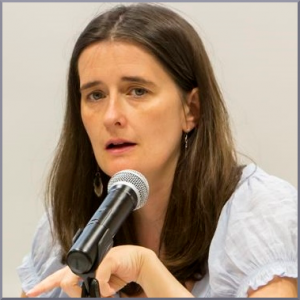 Patrizia Bussi coordinates the Brussels-based European Network of Social Integration Enterprise (
Patrizia Bussi coordinates the Brussels-based European Network of Social Integration Enterprise (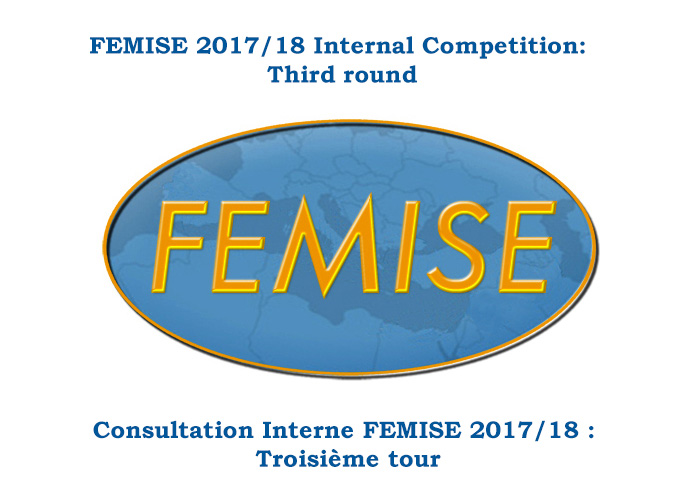 We received nineteen (19) eligible proposals for this 2017 round under the General theme of
We received nineteen (19) eligible proposals for this 2017 round under the General theme of





